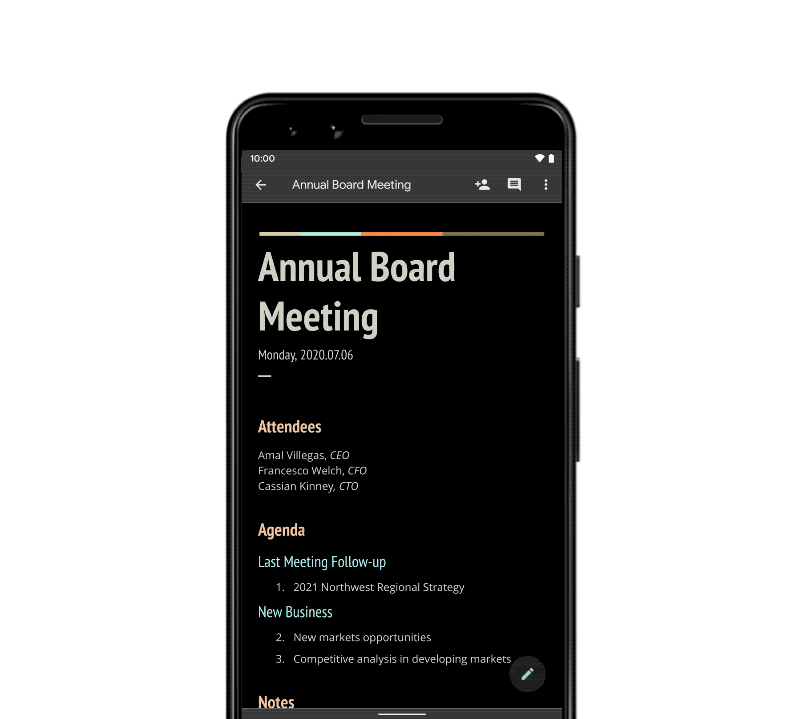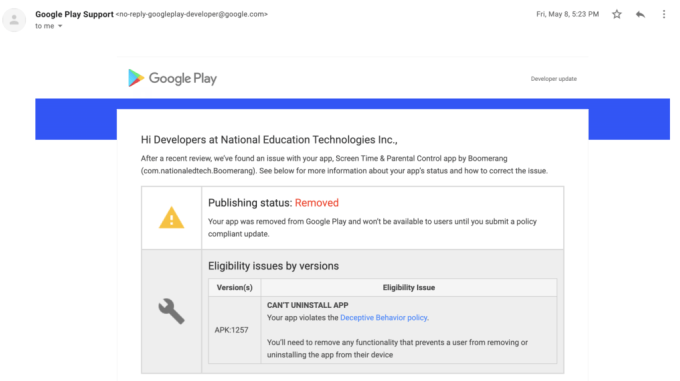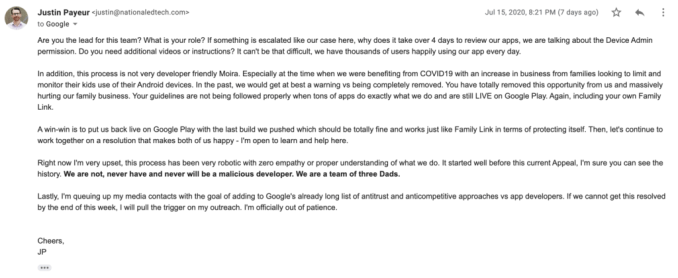At its first virtual World Wide Developers Conference back in June, Apple unveiled a huge piece of news about the future of the Mac. After years of rumors, the company finally confirmed plans to wean itself off of Intel processors in favor of its own in-house ARM-based chips. Apple noted that the process would be a gradual one, taking around two years to transition the entire line.
It was a rare peek behind the curtain for the company, owing to the fact that it needed to prep developers ahead of the transition, even releasing a limited ARM-based version of the Mac mini to help kickstart the process. That kind of lead time can be tricky to navigate. While it noted that the first ARM-based Macs are set to arrive later this year, Apple’s road map still includes Intel systems — which it added it will continue to support for “years to come.”
Announced this week, the long-rumored update to the iMac falls into the latter category. The system will be one of the last Macs to sport Intel silicon. Apple’s not saying how many more are still left in the pipeline, but the desktop adopts the chip giant’s 10th-gen Comet Lake processors. The new device puts Apple in the somewhat tricky position of positioning the new models as the greatest thing since sliced bread, while acknowledging that the biggest change to the category in about 10 or so years is on the way.
We don’t know specifically when ARM-based iMacs are coming, of course. Various earlier rumors pointed at a refreshed Intel model this year, with a new version sporting Apple silicon in 2021. Things are further complicated by rumors surrounding the imminent arrival of a radically redesigned version of the all-in-one. For now, however, the iMac retains its familiar, iconic form factor.
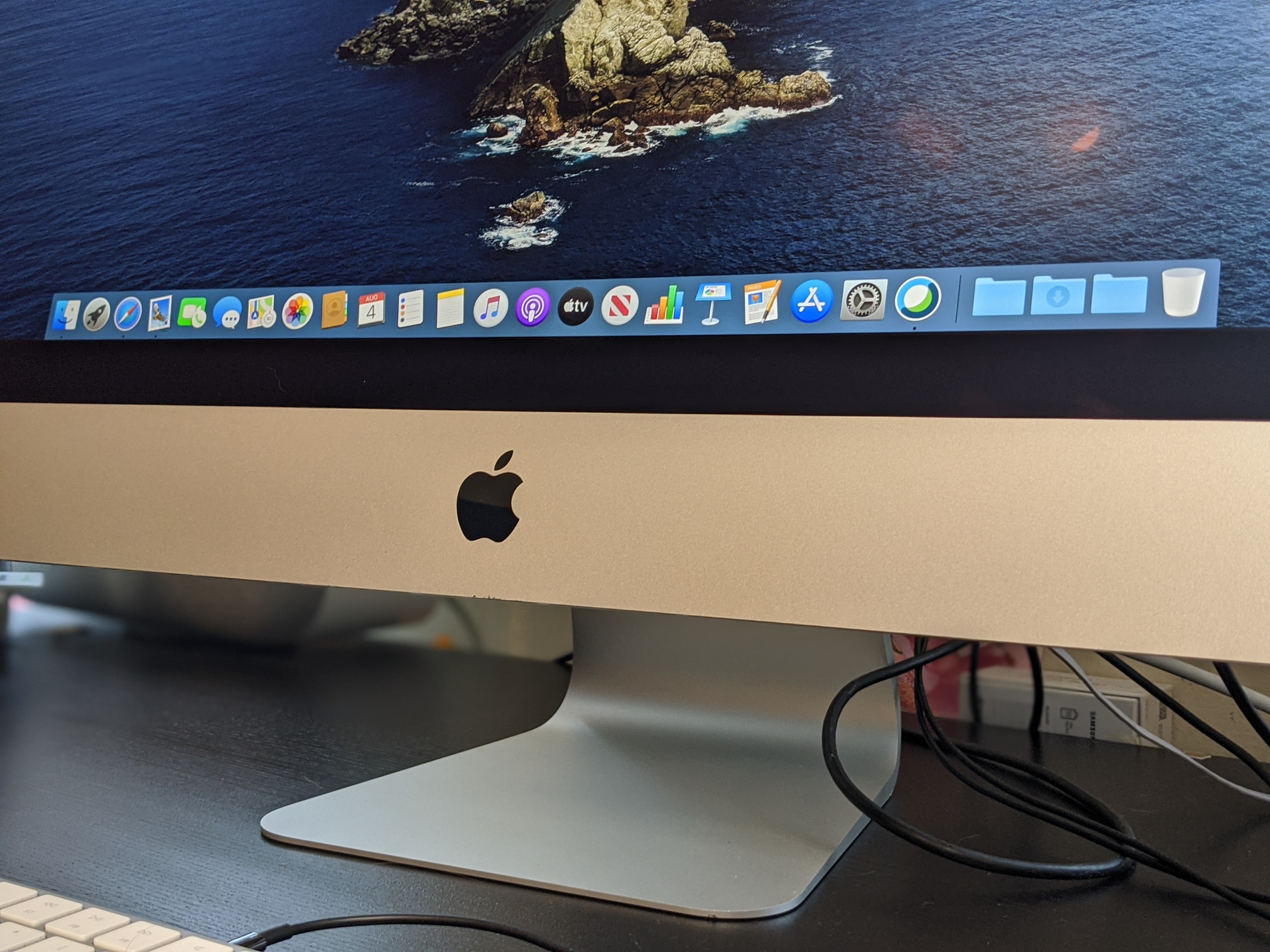
Image Credits: Brian Heater
Of course, the truth of the matter is that not everyone is able, willing or even interested in waiting for a mystery refresh. That’s kind of the thing with consumer hardware. There’s always an update arriving down the road. At some point you need to bite the bullet, pull the trigger or whatever your chosen metaphor. And this is, indeed, a powerful and capable machine. Also, let’s not discount the current demand for PCs.
After a rough first quarter due to supply issues, demand of home laptops and desktops is on the rise as many office employees have come to recognize that remote work is going to very much be our reality for the foreseeable future. Keep in mind that Google recently moved its office reopening date to next July, and the company is very much a bellwether for the tech industry at large. If you’re going to be working from home for awhile, two things are essential: a nice office chair and a capable computer.
The first bit is a conversation for another day. The second, on the other hand, is most easily accomplished with an all-in-one, and all-in-ones don’t get much easier than the iMac. Seriously, I set up the new 27-inch yesterday, and it really is the definition of Apple’s promise to “just work,” right down to the gigantic power button on the back. I’ll also quickly add that the version Apple sent me as configured is way, way more than most office workers are going to require.
The model has a 3.6 GHz 10-Core Intel Core i9, 32GTB of RAM, the AMD Radeon Pro 5700 XT with 16GB of Memory, 1TB of storage and the nano-textured glass. I just ticked all of the corresponding boxes on Apple’s site and found the system that starts at $1,800 priced at about $4,500, not including the Magic Keyboard and Trackpad. In fact, this is precisely the spec level that blurs the line between the upgraded iMacs and the iMac Pros.

Image Credits: Brian Heater
Apple was, of course eager to point out the system’s potential for creative professions. And, indeed, the iMac has become an increasingly capable device over the past several years, and with the current configuration on the system I’m using, it’s easy to imagine this thing ending up in some music and even indie film studios. The line really saw a real expansion into the creative pro category when the iMac Pro stepped in to fill the absence left by the then-suspended Mac Pro line.
The non-Pro iMac line is well-positioned to appeal to the bedroom musicians and movie-makers, an increasingly broadening category in the age of COVID-19. Perhaps even more relevant, however, are the system’s teleconferencing capabilities. It seems unlikely that COVID-19 had a major impact on a device that had likely been in the pipeline for some time, but the new model does thankfully come with some features that will be welcome as Zoom conferences become an ever-increasing fixture in day-to-day work life.
The biggest upgrade here is the move from the 720p camera to the 1080p one found on the iMac. As someone who’s been playing around with his home audio/video setup during the pandemic while TechCrunch enters the brave new world of virtual tech conferences, it’s something that I’ve had a keen eye on. I’ve been suggesting since the outset of the pandemic that the next generation of laptops and desktops are finally going to be getting serious about microphones and webcams, after years of letting smartphones lead the pack.

Image Credits: Brian Heater
I’ve upgraded my system ahead of our big Disrupt event in September to include an external camera and microphone. I recognize that these are both probably overkill for a majority of users. The above shot was taken with the iMac webcam. It’s a clear shot and more than acceptable for teleconferencing needs. The system sports a number of on-board sensors designed to augment the experience, including face tracking for better shot framing and increased performance in low light.
I would love to see some future upgrade that adds depth detection and a bokeh effect — preferably real, though something akin to the portrait mode on the iPhone could also work. Something that’s really dawned on a lot of us over the past several months is that we don’t necessarily want the world — or even co-workers — peeking into out homes at all times. In fact, the depth-of-field is the number one reason I’ve opted to upgrade to the aforementioned external camera.
The same can be said for the microphone. It’s clear and perfectly suited to teleconference. Above is a clip of me reading the first few sentences of White Noise (it’s the first thing that popped into my head, I don’t know what to tell you). Don’t mind the slurred speech (Bell’s palsy sucks, don’t get it), but the audio is perfectly suited for a Zoom call. In a push to appeal to creatives, the company notes that the mics — similar to the hardware found on the 16-inch MacBook can be used for things like scratch vocals. I would say the do the trick for a majority of things we need day to day, but if you’re going to be say, recording a podcast or voice-over work, I would seriously consider an external mic.
The speakers, too, fill roughly the same needs. They’re perfectly good for a teleconference, audio playback and even casual movie watching and music listening. As someone who’s slightly obsessive about music listening, I would likely invest in some external speakers to pair with the desktop in the home setting, but the computer audio is well suited for an office.
The display, on the the other hand, is downright stunning. It’s a 5K (5120 x 2880) with 14.7 million pixels. It’s a bright 500 nits, and the colors pop. This is the first time the company has brought True Tone technology to the iMac, using light sensors to adjust the screen to more true to life colors. It’s a nice addition, and it all leads to a screen that positively pops. At the end of a long day, I’ve taken to swiveling the iMac around and using it to watch movies from my couch.
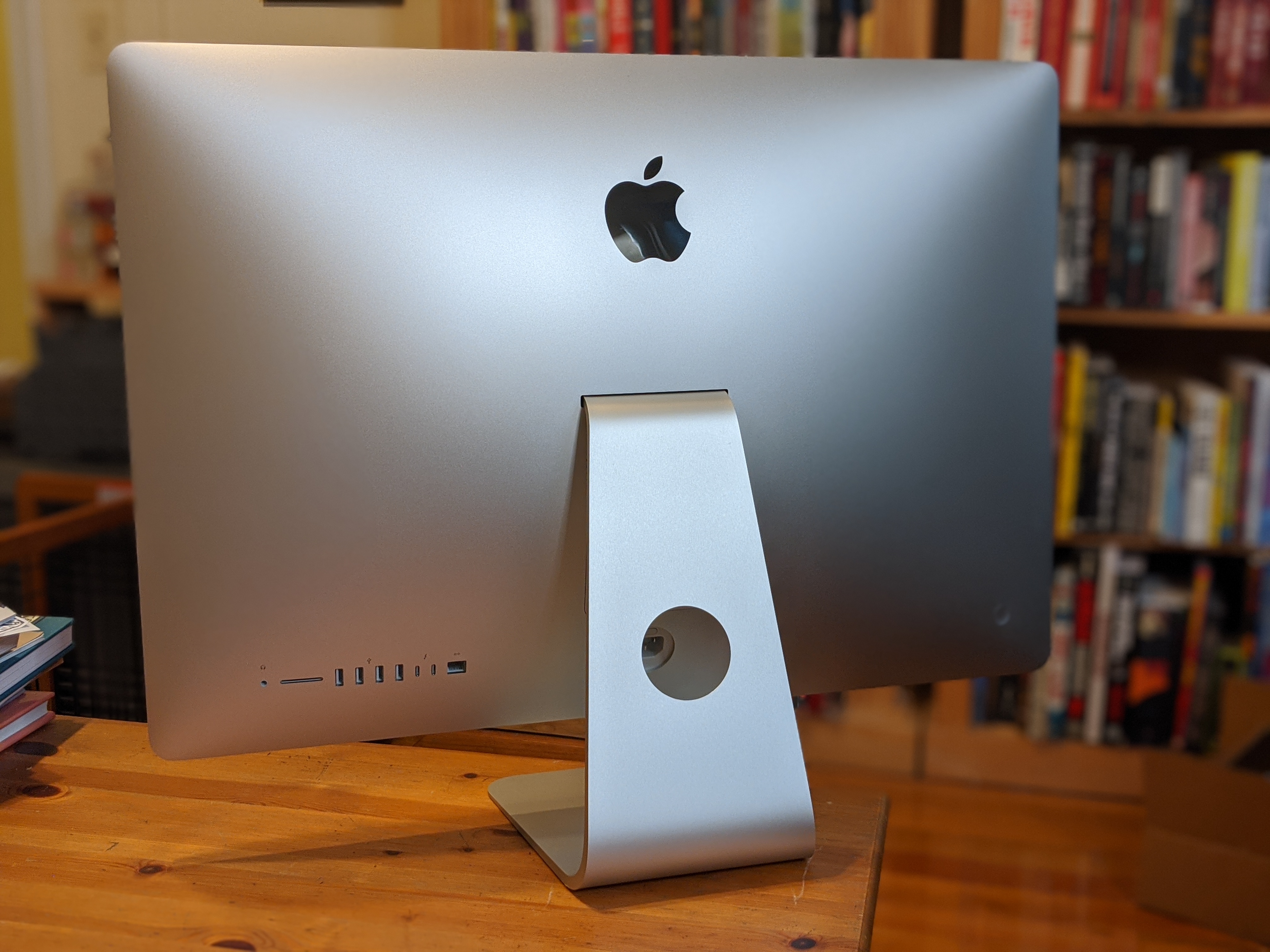
Image Credits: Brian Heater
The other big new addition here on the screen front is the Nano-texture glass first introduced in the Pro Display XDR. I’ll quote Apple directly on that one: “Unlike typical matte finishes that have a coating added to the surface to scatter light, this industry-leading option is produced through an innovative process that etches the glass itself at the nanometer level.” More simply (and less marketingly) put, it’s a method for reducing screen glare that etches tiny nano structures in the glass instead of just adding a coating.
I’ve long felt that the Mac displays were too glossy for my liking and would happily move to nano-texture for all of my systems. The downside of the tech is that it seems to be prohibitively expensive. In the case of the 32-inch XDR, it adds $1,000 to the cost of the device. Here it’s an additional $500. In either case, it’s probably going to be far too pricey an addition for anyone who doesn’t absolutely need a glare-free system for work-related purposes.
There’s a nice selection of ports on the back of the device. You get four USB-A (full-size USB ports) and two Thunderbolt 3/USB-C. I could have done with more of the latter, in an effort to further future-proof the system, but it’s a solid selection, none the less. There’s also a gigabit Ethernet port that can be upgraded to 10GB, for those who need to hard wire (another thing I’ve found necessary in this age of teleconferencing).
All in all, there are some really nice upgrades here. And it’s been fascinating watching the iMac upgrade into a truly capable machine. As configured with the unit Apple sent, you should probably be seriously considering the iMac Pro, which starts at $500 more (I mean, you’re already in for $4,500, after all, so what’s another few hundred dollars between friends). The upgrade will get you things like improved graphics, an improved thermal system, more power and more configuration options.
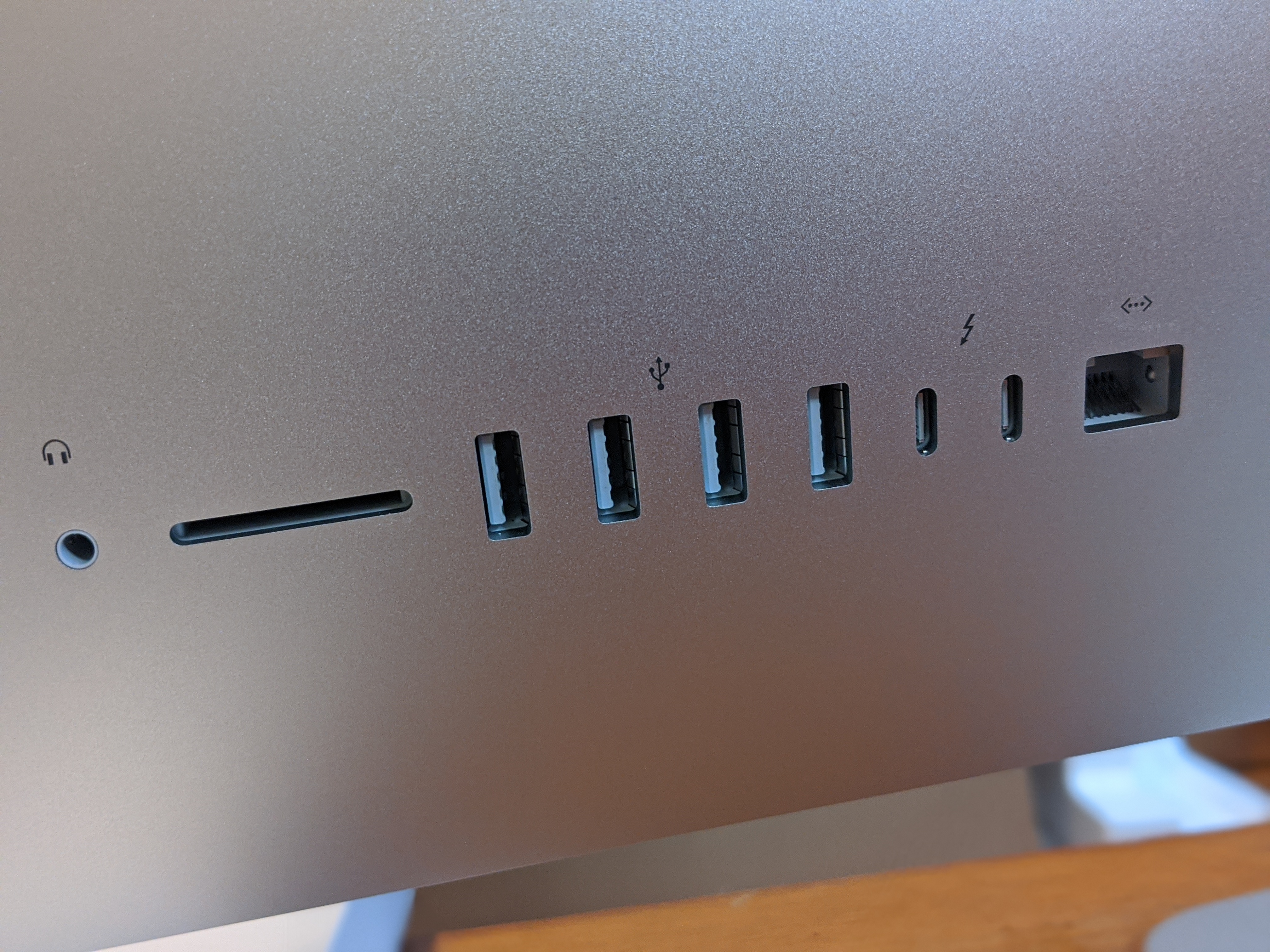
Image Credits: Brian Heater
The big open question mark here is what the future looks like for the iMac — and how long we’ll have to wait to see it. That is, of course, the perennial question for hardware upgrades, but it’s exacerbated by the knowledge of imminent ARM-based systems and rumors surrounding a redesign. The iMac has and continues to be a nice-looking machine, but it’s hard to shake the feeling that it could do with a redesign.
Likely both of these are still a ways down the road, however. And plenty of people who are in the process of setting their remote work stations will find plenty to look at with this easy-to-use all-in-one. It can be upgraded to sport some serious firepower and does good double duty as a work station and entertainment machine — the latter of which is great for a weirdo like me who doesn’t own a television.
The new iMac is available now, starting at $1,799.
from Apple – TechCrunch https://ift.tt/33zLQOn

